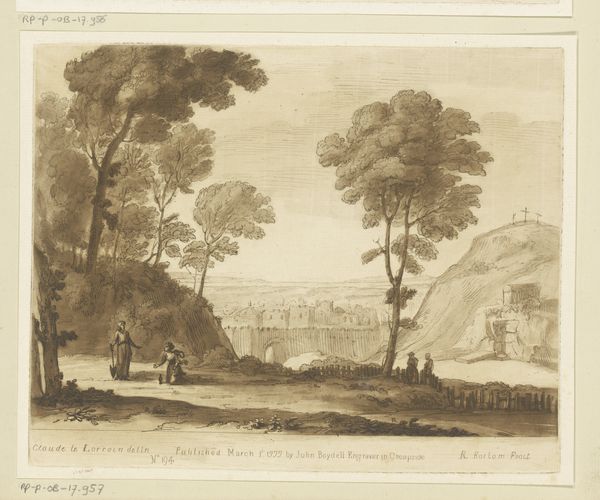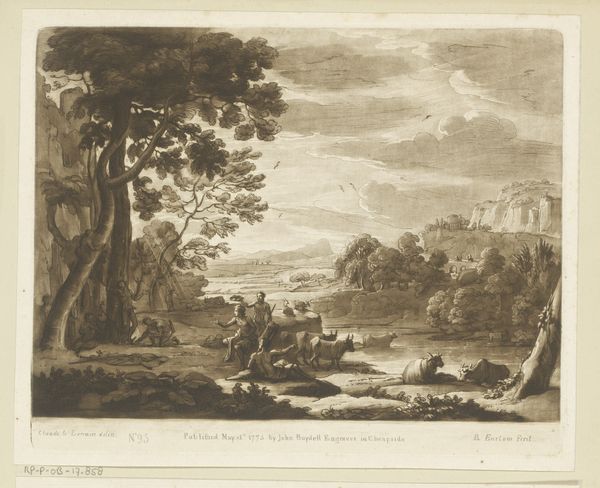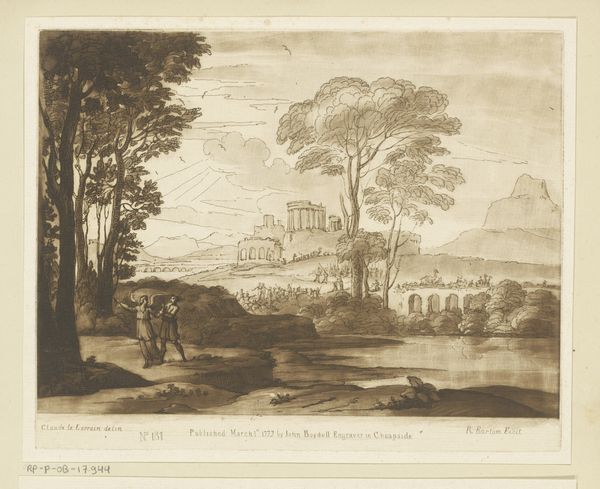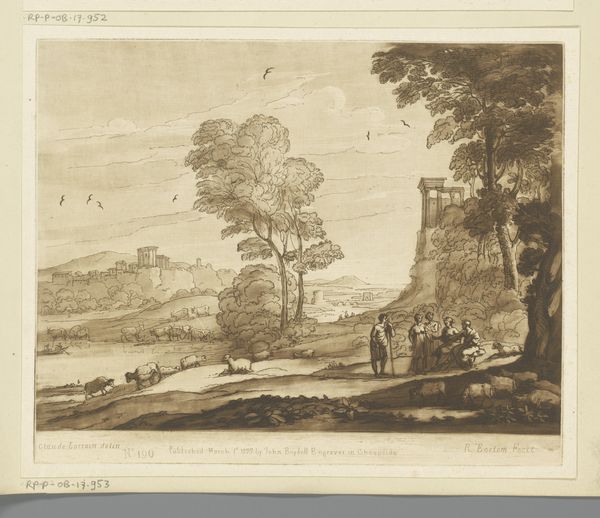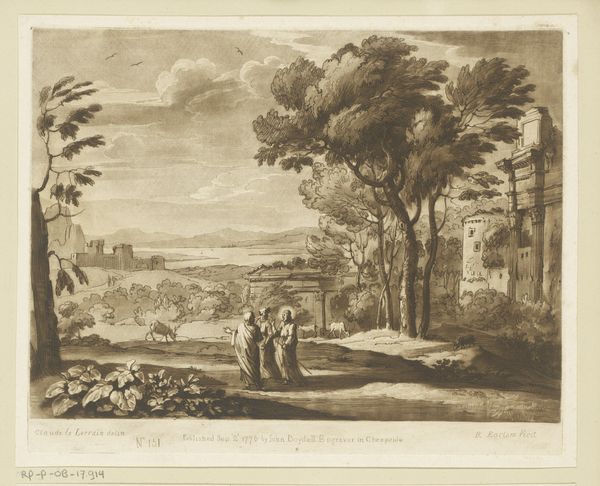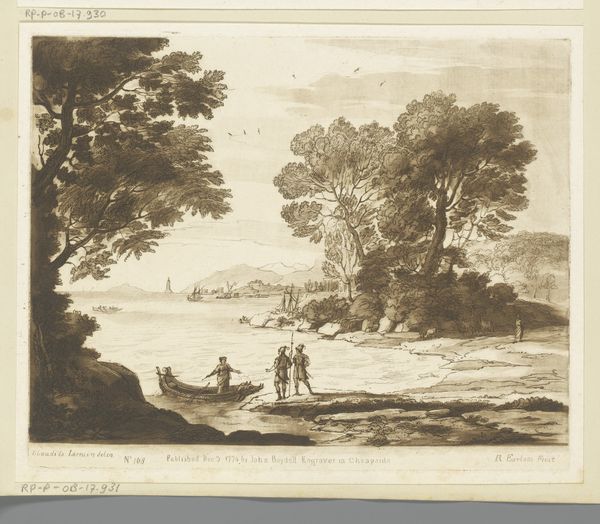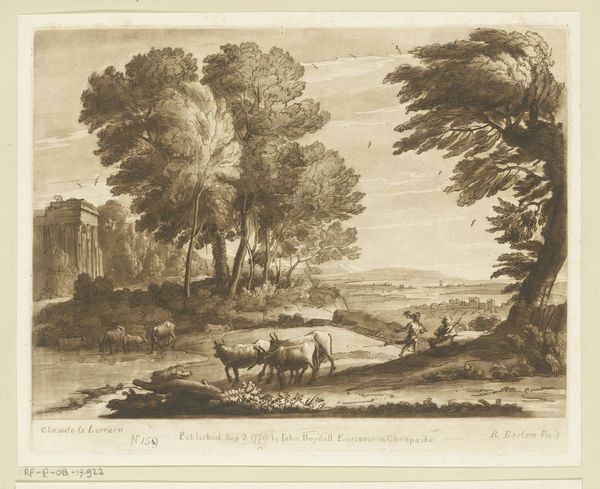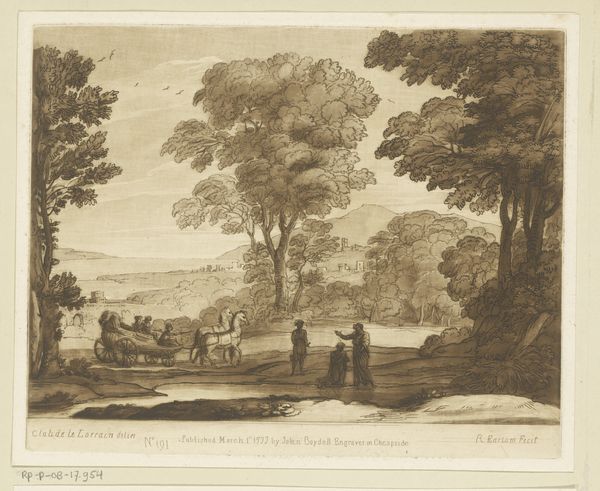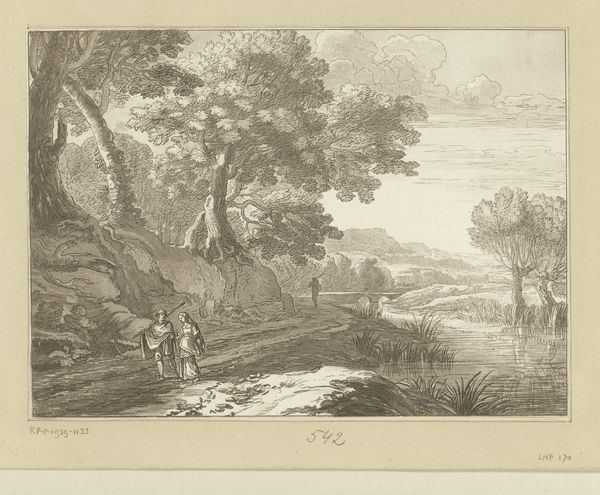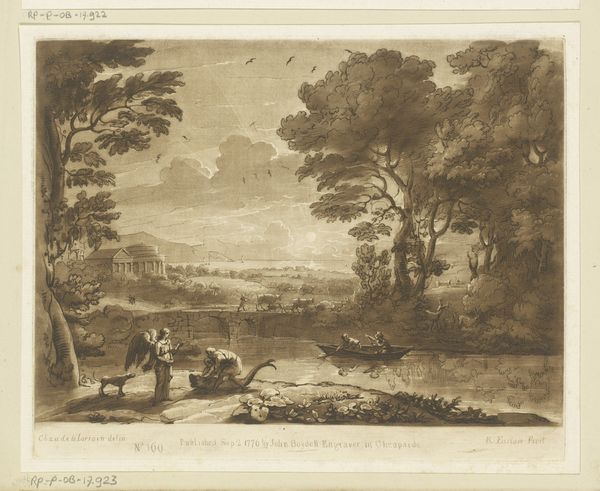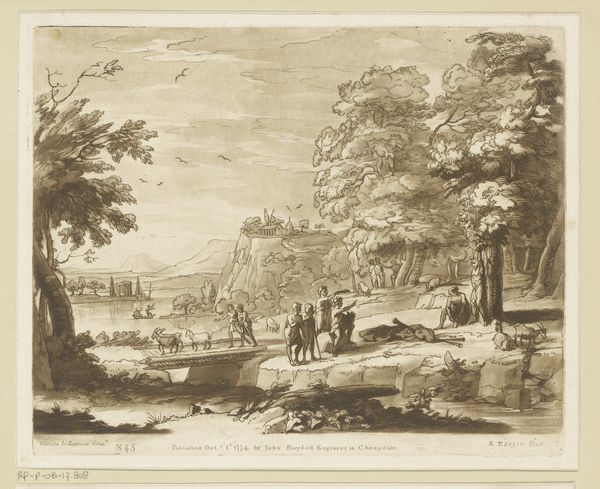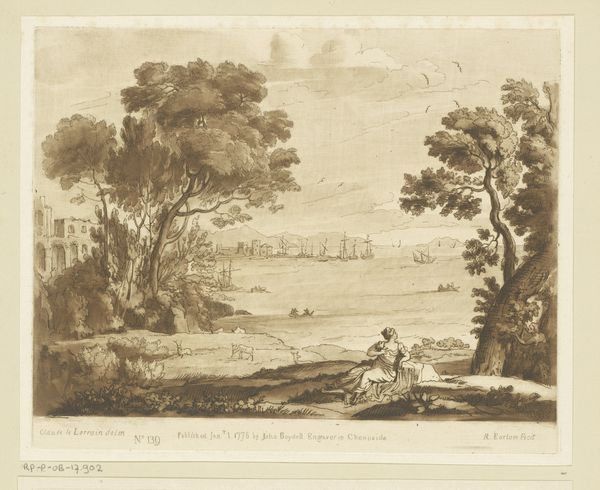
print, etching, engraving
# print
#
etching
#
landscape
#
classical-realism
#
engraving
Dimensions: height 206 mm, width 258 mm
Copyright: Rijks Museum: Open Domain
Curator: Ah, here we have Richard Earlom's "Coastal Landscape with Aeneas and the Cumaean Sibyl," an engraving from possibly 1777, currently residing in the Rijksmuseum. It depicts a scene inspired by classical mythology, rendered with Earlom's skilled use of line and tone. Editor: My initial reaction is that this evokes a strong sense of melancholy. The monochromatic palette, the vast, somewhat desolate landscape—it all contributes to a feeling of longing, perhaps for a lost golden age. I am curious about the implications of how gender is portrayed in this image. Curator: Indeed. The composition itself is quite striking. Note the use of framing elements—the trees on either side draw the eye into the central space where Aeneas and the Sibyl are positioned. The architectural elements in the distance, the temple and the suggestion of a city, provide a sense of depth and classical grandeur. It adheres strictly to classical artistic composition conventions of structure, tone, and depth of perspective. Editor: But who benefits from this sense of 'grandeur'? Considering the Sibyl's prophetic role, often one fraught with sacrifice and imposed service by men to country and kings, I am impelled to examine the narrative through a more critical lens. The Sibyl’s identity is really defined by a sort of sanctioned subjugation, her divine gift yoked to patriarchal demands. She exists only in relation to power, not separate from it. Curator: Certainly. What I find especially interesting is Earlom's technique. Through engraving and etching, he achieves a remarkable range of textures. The details of the foliage, the subtle gradations of light and shadow—these elements contribute to the overall visual richness. I notice the ways line and shape work with light. Editor: Yes, and understanding the historical context is also critical. This work would have been seen and assessed in terms of a very narrow definition of nation and identity. Curator: I'm intrigued by how Earlom captured the subdued, reflective mood of the original painting by Claude Lorrain which served as Earlom's inspiration. Editor: For me, it's impossible to overlook the power dynamics at play within this classical fantasy, the way figures like the Sibyl are instrumentalized for epic masculine quests. It reminds me how narratives of power are so entrenched even in seemingly beautiful or idyllic imagery. Curator: It seems Earlom successfully captured Lorrain's landscape compositions for a different contemporary context, however you view the narrative behind the Sibyl and Aeneas. Editor: Absolutely, and exploring those layers of meaning – the historical and the artistic – is what makes engaging with art so worthwhile. It encourages to investigate, evaluate and explore power.
Comments
No comments
Be the first to comment and join the conversation on the ultimate creative platform.
